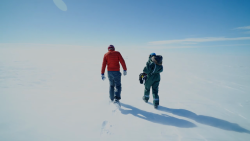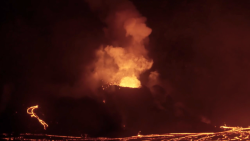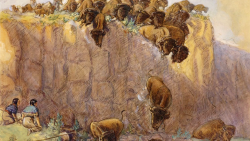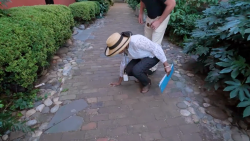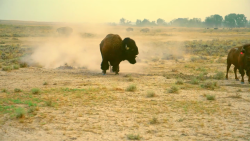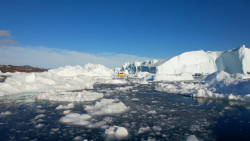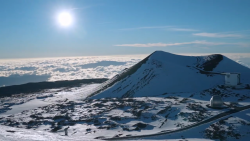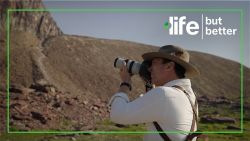Catch “The Wonder List” on CNN Saturdays at 9 p.m. ET/PT
The rocks are moving.
Wait. Check that. Those aren’t rocks. Because that one just sneezed.
They are creatures! Dirty black with skin as rough the hardened lava beneath them, long tails and dorsal scales.
They are poodle-sized Godzillas. And they are EVERYWHERE, thousands of them sunning in lazy clumps and sneezing piles. To make this scene even more bizarre, scattered among them are hundreds of smooth, cuddly blobs with big, limpid, take-me-home-and-raise-me-in-your-bathtub eyes.
And then a hawk floats from the sky, perches an arm’s length away and gives a look that says “you’re not from around here.”
Welcome to the Galapagos.
These islands off the coast of Ecuador have been on my Wonder List for a very long time. I expected a few giant tortoise encounters and of course, Darwin’s famous finches, but I never imagined standing on a forbidden beach of newborn rock, surrounded by sea iguanas and Galapagos hawks, sea lions and fur seals. Never imagined animals reacting with more puzzled curiosity than fear, because I am something they never see. I’m human.
Let’s pretend Earth is 46 years old (instead of the mind-boggling 4.6 billion years the best science provides).
On this scale, people showed up about four months ago.
The industrial revolution began 60 seconds ago and in that “minute,” humans have erased over half of earth’s forests and almost half the fish.
Granted, a lot of that destruction went into feeding 7 billion people, lifting millions out of crushing poverty and extending life expectancy around the world. But in the process, we are moving a scary number of our planet-mates onto the lists of the endangered.
11 wildlife experiences that could vanish in your lifetime
There have been five mass extinctions in earth’s history. We are living through the sixth. This time we can’t blame asteroids or a sudden ice age. This time it is our fault, in ways both intentional and accidental, and there are few better places to understand how and why than the Galapagos Islands.
Charles Darwin was a wet-behind-the-ears divinity school graduate when he was tapped to keep the company of a depressed sea captain named FitzRoy on a ship called the Beagle. As they sailed around South America, he walked these beaches covered with creatures, gruesome and cuddly and curious. They planted ideas in his young brain that would change the world.
He also noticed that the giant land tortoises of the Galapagos were being hunted to the brink but it didn’t stop him from eating several on the voyage back to England. In the 1830s, who knew that man could wipe out a seemingly abundant species?
Now we know. And in recent years, multimillion-dollar efforts to save the giant tortoise have included snipers in helicopters, gunning down a quarter-million invasive goats. To save an endangered mockingbird, there are plans to carpet-bomb an entire island with rat poison. And Galapagos National Park is wrestling to balance a demand for more tourism with a mission to leave these precious ecosystems alone.
All of these stories inspired my modern “Voyage of The Beagle” – a quest to see how Darwin’s ideas of adaptation hold up in a world of blazing-fast change.
Aboard a funky, small boat called the Queen Mabel, we gained access to wild corners of the Galapagos where few people have ever been allowed to tread.
What we found was surprising and staggeringly beautiful.
After scuba diving with those sneezing rocks, the sea iguana turned out to be my favorite creature in this one-of-a-kind menagerie, one that just might hold the answer to a massive medical secret – if they survive.
The Galapagos Islands and nine other ultimate dream trips
Galapagos Ecological Airport – the world’s first “green” airport
Editor’s note: This article was originally published in 2015.


